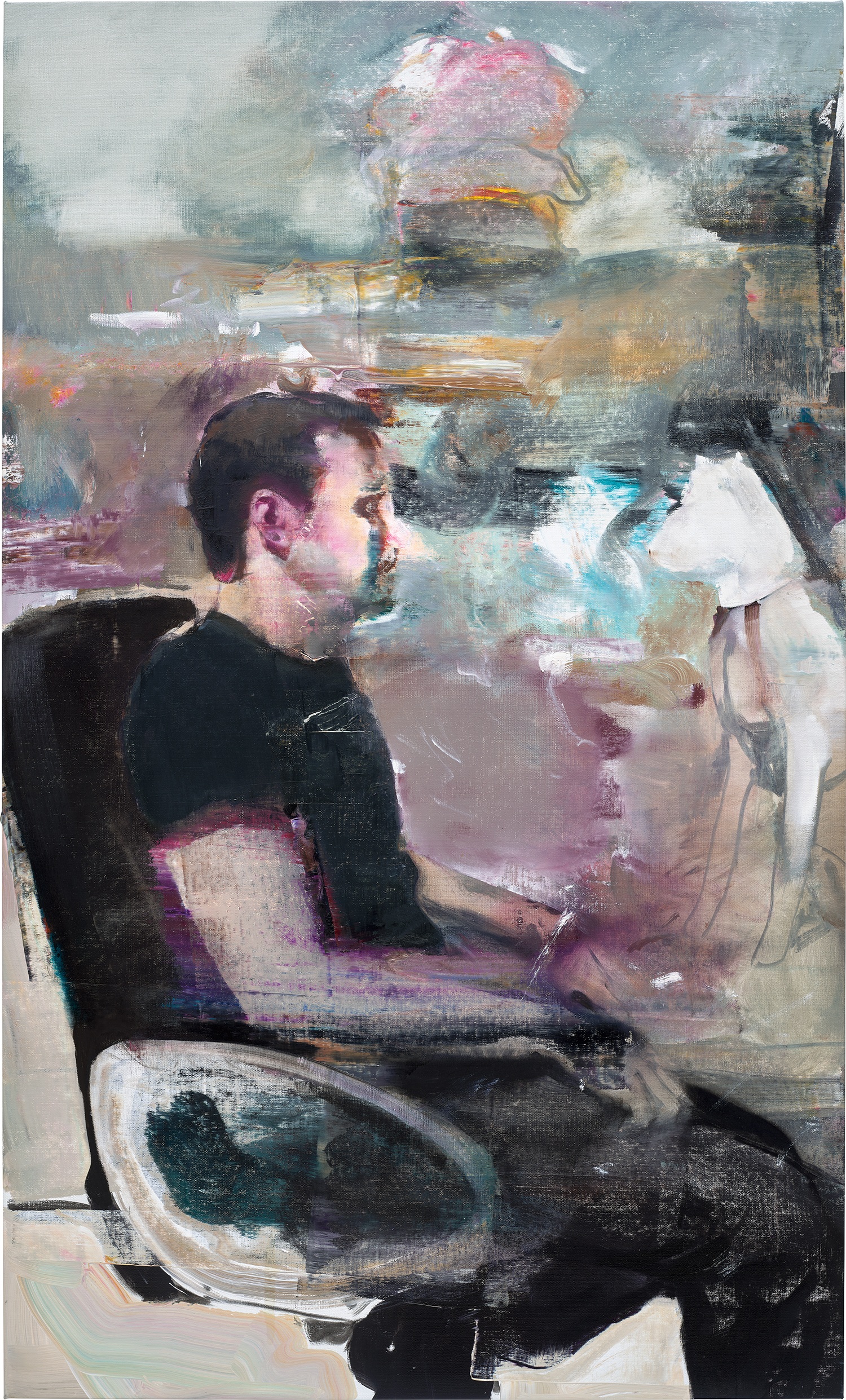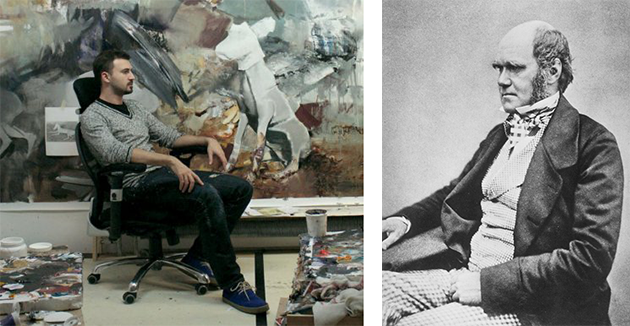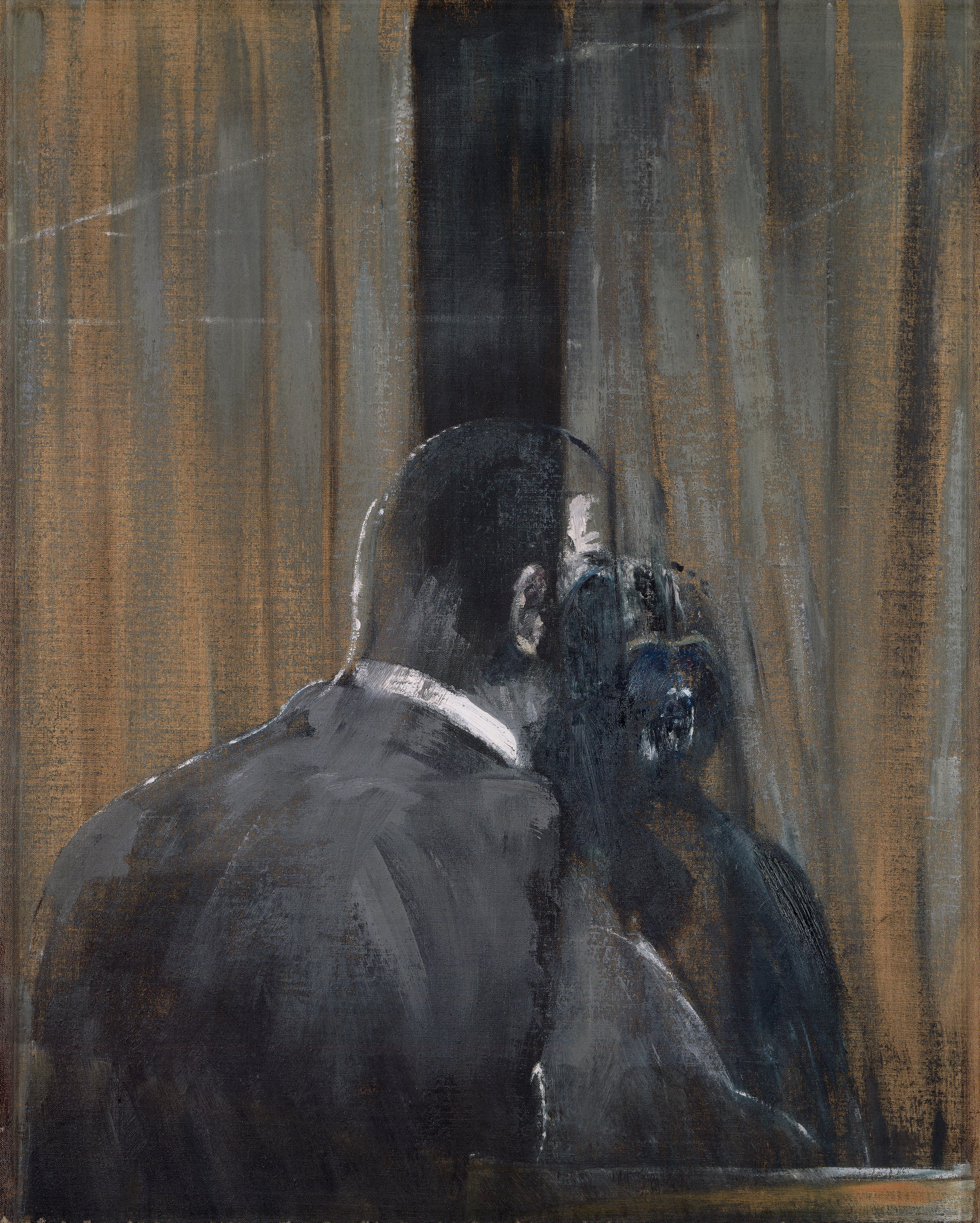

27
Adrian Ghenie
Self-Portrait as a Monkey
- Estimate
- £600,000 - 800,000‡♠
Further Details
“In regard to Darwin, there are a number of famous photographs that have fixed him in the collective imagination. The typology is that of the old man with a beard. He was caricatured during that period, as it was to transform him into a monkey.”—Adrian Ghenie
Executed in 2010, Self-Portrait as a Monkey belongs to a powerful series of works by Romanian artist Adrian Ghenie which draw on the legacies of Charles Darwin’s revolutionary theories of evolution, first set forth in his 1859 text On the Origin of Species and later macabrely distorted by eugenicists and the ideology of the Third Reich. An important early iteration of the theme, which would be developed the following year in works presented in his exhibition with Haunch of Venison in London, his inaugural exhibition with Pace in New York in 2013, and in his ambitious Darwin’s Room, presented in the Romanian Pavilion of the LVI Biennale di Venezia in 2015, Self-Portrait as a Monkey stages the tensions between individual identity and the darker forces of European history that characterises so much of Ghenie’s work. While later interpretations of the theme showed the artist in direct dialogue with Darwin himself, as in his 2012 Self-Portrait as Charles Darwin 3, now in the collection of the Contemporary Art Centre in Malaga, in the present work Ghenie conflates the image of artist and monkey, drawing on rich associations between widely circulated caricatures of Darwin as a humanoid ape following the publication of The Descent of Man, the Nazi designation of certain artists as ‘Degenerate’ in the 1920s and 30s, and the violently disquieting human-animal hybrids that populate Francis Bacon’s canvases.
Painterly Evolutions
Seated and presented in a side profile format, the arrangement of the central figure recalls the formal studio portraits that became increasingly popular over the course of the 19th century with the rapid development of photographic techniques, notably those of Darwin himself, used as the frontispiece for many of his published writings. They conjure an image of unshakable authority and of man’s control over the natural world, elements ironically adopted in the photographic portraits of the artist in his studio used as the basis for these compositions, and subtly undercut in Ghenie’s fluid treatment of painterly form.

[Left] Adrian Ghenie. Image: Courtesy of Tim Van Laere Gallery
[Right] Charles Darwin, Maul & Fox, circa 1854
Building up the richly textured surface of his canvas in a palette of atmospheric dark tones of burgundy, blacks, and greys accented by bright whites and brilliant shocks of aquamarine, Ghenie’s likeness is transformed through gestural marks and passages of scraped, smudged paint. Although the figure is rigidly seated, this conflation between stasis and movement in masterfully sustained throughout the composition, endowing it with a powerfully expressive quality that speaks to Bacon’s deeply affecting images of existential angst. Recalling especially the British post-war master’s rigid framing techniques and his interest in hybridity, Ghenie obscures, effaces, and overpaints his facial features here, blending them with more simian characteristics and illuminating the ways in which ideology shapes and distorts us.

Francis Bacon, Head IV, 1949, Private Collection. Image/Artwork: © The Estate of Francis Bacon. All rights reserved, DACS/Artimage. Photo: Prudence Cuming Associates Ltd
Although Darwin himself never actually proposed that humans are descended directly from monkeys, this misconception was widely circulated at the time, largely through crude caricatures of the Victorian naturalist such as the one published by the satirical magazine The Hornet shortly after the 1871 publication of The Descent of Man and persists to this day. By the late 19th century, Darwin’s ideas related to natural selection were widely applied to a mode of ‘social Darwinism’ that was further distorted in the early decades of the 20th century in the racial ideology and aggressive eugenics programs implemented by the Nazis. It is to this darker side of human nature and the course of 20th century history that Ghenie draws our attention to, the mushrooming clouds behind the seated figure a haunting evocation of the devastating atomic bombings of Hiroshima and Nagasaki and the pervasive threat of nuclear war that persisted in the following decades.
Aligning himself here both with the so-called ‘degenerate’ artists persecuted under the Nazi regime, and with the popular caricature of Darwin reimagined as a monkey, Ghenie draws attention to the ways in which ideology shapes us and the forces of history in profound and distorting ways. For Ghenie history – and especially the tumultuous recent history of the 20th century – can be read as a struggle between reason and irrationality, a tension that makes itself powerfully felt in Self-Portrait as a Monkey.
Collector’s Digest
One of the most important and coveted artists of his generation, Adrian Ghenie’s work is preoccupied by questions of history, memory, and ideological power struggles, driven in part by his own experiences growing up in Romania under Nicolae Ceaușescu’s dictatorship.
The figure of Charles Darwin and the implications of his research into questions of evolutionary biology has been a recurring theme for the artist, most notably in Darwin’s Room, his critically acclaimed presentation for the Romanian Pavilion at the 56th Venice Biennale.
Works by the artist are held by major institutions across the world. The present work was first exhibited at the Stedelijk Museum voor Actuele Kunst, Ghent shortly after its execution in 2010.